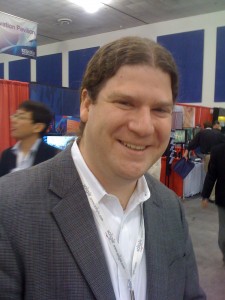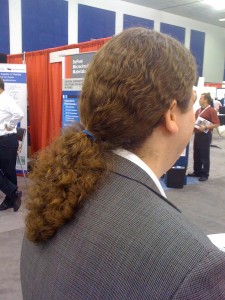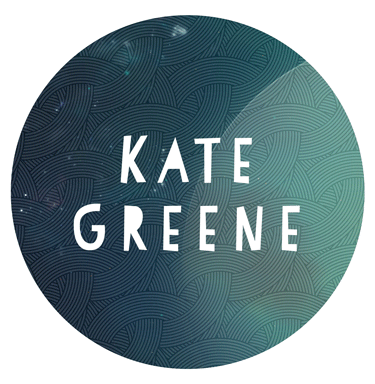 QD Vision, an MIT spinout, is commercializing quantum dots, tiny crystals that emit bright light of a particular color. Because quantum dots shine at specific colors, a layer of them can be added to an LED to alter its original color. This is exactly QD Vision’s first product: quantum dots that makes white LED lights, famous for their erie hue, look better.
QD Vision, an MIT spinout, is commercializing quantum dots, tiny crystals that emit bright light of a particular color. Because quantum dots shine at specific colors, a layer of them can be added to an LED to alter its original color. This is exactly QD Vision’s first product: quantum dots that makes white LED lights, famous for their erie hue, look better.
The quantum dot lighting solution is relatively simple: Adding red quantum dots to a white LED makes the resulting white light appear warmer. Light from the LED gives electrons in the quantum dots an energetic boost for a short time; when the electrons return to their lower energy state, they emit a photon, a process called photoluminescence. (Photoluminescence is in contrast to electroluminescence, in which electric current, not light, excites electrons.)
I caught up with the founder of QD Vision, Seth Coe Sullivan, at the Printed Electronics 2009 conference in San Jose last week to ask him a few questions about lighting. Below is an edited version of our conversation:
Kate Greene: What quantum dot products are you selling right now?

KG: The optic is emissive, and so it doesn’t decrease efficiency like a filter?
SCS: Right. We’re using blue photons from the LEDs and making red photons from the quantum dots. In theory you could make the lamp four times as bright by going from blue to red. But we’re not using all the blue light from the LEDs. We’re just making a little bit of red to tweak the spectrum.
KG: Okay, give me a quick definition of quantum dots.
SCS: A quantum dot is a semiconductor nanocrystal that we synthesize in a chemical solution. When you make semiconductors very small, the quantum physics dominates the conventional semiconductor physics. So size matters. A quantum dot, made of the semiconductor cadmium selenide, that is six nanometers in size emits red light, one that’s four nanometers emits green, and one that’s two nanometers emits blue.
KG: How long have they been around?
SCS: They date back to the 80s. But there’s really been a series of improvements of efficiency and stability so that all of a sudden quantum dots have crossed the line in commercial relevance. The first applications were all in biology. They were used to tag sections of cells and other things. Then there was a Christmas tree light product that predated us. It’s neat, but it doesn’t provide any actual value to the world. Still, it was great to see them put something on the market.
KG: But in terms of a major commercial product, QD Vision has the first?
SCS: We really are the first to put something in a mainstream market where you’re adding value to the world. By making LED lighting, which is the most efficient lighting technology in the world, something that’s pleasing to consumers, all of a sudden you can drive adoption of LED technology. LEDs make up less than one percent of lighting right now. Philips talks about it being 80 percent in 2020. That’s massive growth in the next 10 years, but in order for that to happen, people have to want to buy them. It’s not enough to be efficient. They have to look good too. We think we’ve solved that problem, and we’re talking to all the major players to build quantum light optics into their products.
KG: What’s the change in cost to add a quantum light optic?
SCS: It’s actually a reduction in their manufacturing cost. Nexxus is actually going to offer products at same price, but that just means they’ve improved their margins by increasing their efficiency. When you look at these things, you always need to do an apples-to-apples comparison. I’m comparing our product, with the high color quality that it has, with trying to make the same color quality with any other technology. Because we’re doing that with roughly 30 percent more efficiency, you’re using 30 percent fewer LEDs to produce the same number of lumens. By putting in a quantum light optic instead of 30 percent more LEDs, you take all that cost out. When you add the cost of quantum light optic in there and the net result should be reduction in main cost.
KG: Can I buy a quantum-dot light today?
SCS: Almost. We are shipping to our customers. Our customers then have to make a lamp or a fixture, sell them to their distributors, and then their distributors have to sell them to end customers who have to install them. Right now that hasn’t sold all the way through. For example, the Nexxus product will be the first quantum lighting product sold on bulbs.com. So probably in late January or early February you’ll be able to go to that site and purchase a Nexxus array lamp with a quantum light optic inside.
KG: Will it be expensive?
SCS: I’m told the retail price will probably be $100.
KG: How does that compare to other LED lighting?
SCS: It’s extremely competitive within LED lighting. LED costs more than other lighting technologies. An incandescent bulb of the type we’re talking about might be $3. A compact florescent might be between $5 and $10, so a $100 light bulb is an investment. But this bulb isn’t meant for you and me, in our homes today. It’s for people who look at total cost of ownership model when they install lighting. So if you’re a building owner, you look at the cost of bulb and also the electricity to run it, the maintenance cost to replace it, and the future bulbs you’re going to have to buy. If you look at total 50,000-hour life of our product, you’ll need five compact florescent bulbs or 25 halogen or incandescent bulbs. Then you add in the cost of the guy climbing the ladder to change the bulb, it pays you back in 12 to 18 months.
KG: What’s next for quantum-dot lighting?
SCS: With existing customers, we will expand the product line offering. So we do that in terms of different colors temperatures offered. 2700 K is the temperature that describes what an incandescent bulb produces. That’s what we’re offering now. But we can also do 3000K, 3500K, 4100K products.
KG: Who are your other customers?

SCS: We’re working with all the lighting majors. Lighting is an extremely fragmented market. We do have a lot of different customers that are in the design cycle to launch products in 2010.
This is the first of two Q&As with Sullivan about QD Vision products. The second Q&A will focus on improving liquid-crystal displays with quantum dots.

Pingback: How Quantum Dots Will Improve LCDs
Pingback: How Quantum Dots Will Make LCDs Better | Hot Electronics Trends